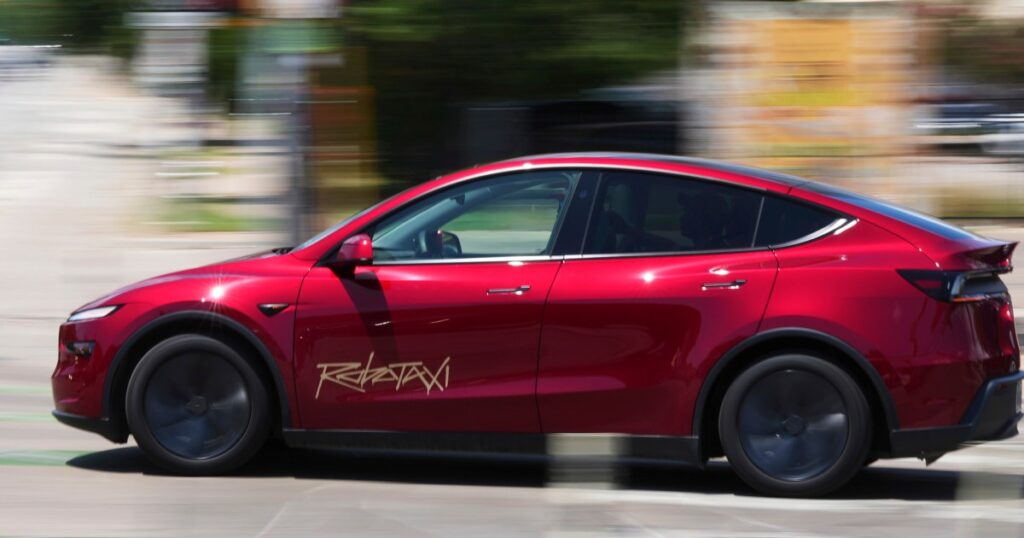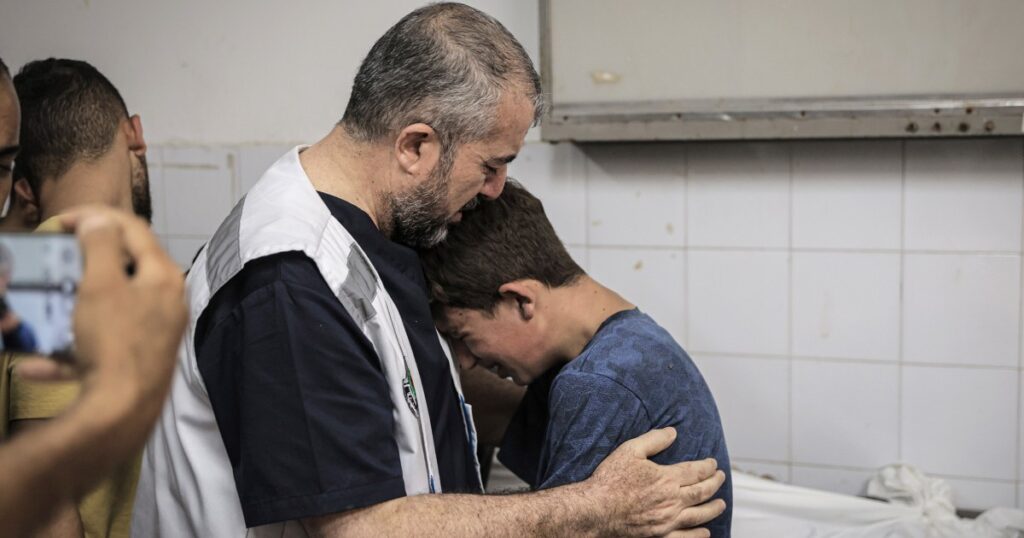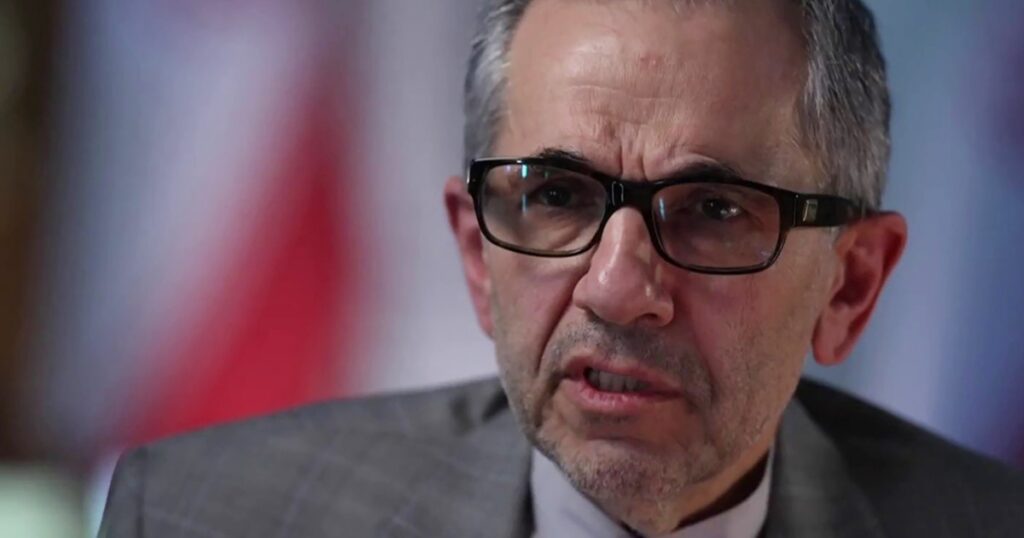Tesla’s Robotaxi Launch in Austin Provokes Mixed Reactions
Two weeks after the rollout of Tesla’s robotaxi prototype in Austin, Texas, a series of viral videos showcasing various incidents and the service’s limited accessibility have sparked confusion and concern regarding the safety of these autonomous vehicles.
The Austin service commenced on June 22, enabling invited users—primarily influencers close to CEO Elon Musk—to summon rides via an app, reminiscent of established services like Uber and Lyft. Each ride is priced at $4.20, a figure often favored by Musk.
While the service operates without a human driver, each vehicle is equipped with a company employee seated in the front passenger location, who can manually stop the car if safety issues arise. Tesla asserts that its experimental software is responsible for operating the cars.
Experts in autonomous driving caution that it is premature to determine the project’s viability. However, federal regulators and some local officials have expressed concerns over multiple documented incidents—shared widely on social media—where the vehicles allegedly violated traffic rules or posed risks to pedestrians. Competitors like Waymo have dismissed these mishaps as outdated technology. Moreover, the financial markets showed minimal response, with Tesla’s stock price remaining relatively stable.
Tesla has not provided updates on the operation of its service. Critical metrics, such as the distance traveled by the vehicles and the frequency of employee interventions, remain unclear. Operating solely in Texas, where regulations surrounding autonomous vehicles are sparse, Tesla is not obliged to disclose this information to local or state authorities.
In the initial weeks post-launch, videos depicting Tesla robotaxis allegedly breaking traffic laws rapidly circulated online. Notable incidents included a Tesla stopping in the middle of an intersection and another operating on the incorrect side of a double yellow line. Further reports indicated that some robotaxis exceeded speed limits and experienced abrupt braking, drawing confusion from passengers.
An investigation by NBC News identified 13 instances on social media where Tesla vehicles seemingly violated the law or made questionable decisions. Attempts to contact the individuals behind these videos yielded no responses.
Concerned elected officials in Austin voiced their worries about the incidents. Vanessa Fuentes, an Austin City Council member and mayor pro tempore, stated, “There are numerous errors,” labeling the technology as unsafe for residents.
Fuentes noted that while other companies like Cruise and Waymo have faced scrutiny for mistakes, she feels Tesla has not sufficiently engaged with local governance—an action she believes would foster public trust.
“Tesla has neglected to consider public feedback in collaborating with our city,” she remarked, emphasizing her support for autonomous vehicles but calling for a temporary halt to Tesla’s service.
Council member Zo Qadri echoed these sentiments, reporting rising frustration among constituents about the situation. He compared the current scenario to past issues with Cruise robotaxis, highlighting that such complaints have not been reported concerning Waymo’s operations.
It remains uncertain whether Tesla might encounter legal repercussions for its robotaxi incidents. Local officials indicated that the process of issuing a traffic citation to an automated vehicle is complex and involves several bureaucratic steps.
The Austin Police Department stated that they promptly address potential legal or safety concerns related to autonomous technologies during regular meetings with the company, prioritizing both public safety and innovation.
The National Highway Traffic Safety Administration is also monitoring the situation and is in contact with Tesla to gather more information.
Texas state Rep. Vikki Goodwin urged caution in Tesla’s operations, stating, “It is in their best interest to prioritize safety to avoid jeopardizing broader plans for launch.” Goodwin, among seven lawmakers who requested Tesla delay its rollout until September 1—when new laws on autonomous vehicles take effect—reported that while Tesla declined to postpone, they communicated intentions to comply with upcoming regulations.
Goodwin noted her apprehensions stem from her own experiences with Tesla’s driver-assistance technology, recalling instances where her vehicle made unexpected maneuvers.
Elon Musk’s aspiration to contend with Waymo, which reportedly has approximately 1,500 robotaxis in operation across cities like Los Angeles and Phoenix, was voiced during the launch. While starting with a modest fleet of 10-20 vehicles, Musk indicated plans for gradual expansion, though the timeline remains uncertain.
Following the launch, Tesla’s stock witnessed a notable spike of over 9% but experienced a decline soon after, reflecting investor concerns regarding the obstacles Tesla faces in scaling its service.
The overall awareness of safety incidents comes largely from initial invitations to influencers who heavily documented their experiences using the service. Given the limited invite-only nature of the rollout, most potential users outside Tesla’s dedicated fanbase have yet to experience it.
While Musk and his supporters herald the service as pioneering, the effort primarily resonates with existing fans rather than the broader market.
Brad Templeton, an autonomous vehicle consultant, noted that Tesla’s advocates tend to be convinced of imminent readiness for the technology, often exhibiting frustration toward skeptics.
He stressed the importance of safety over anecdotal evidence, asserting, “Statistics, not individual incidents, ultimately matter.”
Discussions between supporters of Tesla and Waymo frequently emerge on platforms like Reddit, where debates have intensified regarding the progress each company has made. Waymo advocates highlight its greater experience, while Tesla supporters counter with claims regarding Waymo’s own operational errors.
In the midst of this discourse, some users expressed the desire for cooperation, highlighting the significance of advancements from both companies in the autonomous vehicle landscape.

Passionate journalist and digital news editor with a keen eye for global affairs and emerging trends. As the founder and lead writer of RSS News US, he is dedicated to delivering accurate, insightful, and engaging content to readers seeking trustworthy news in a fast-paced world.


